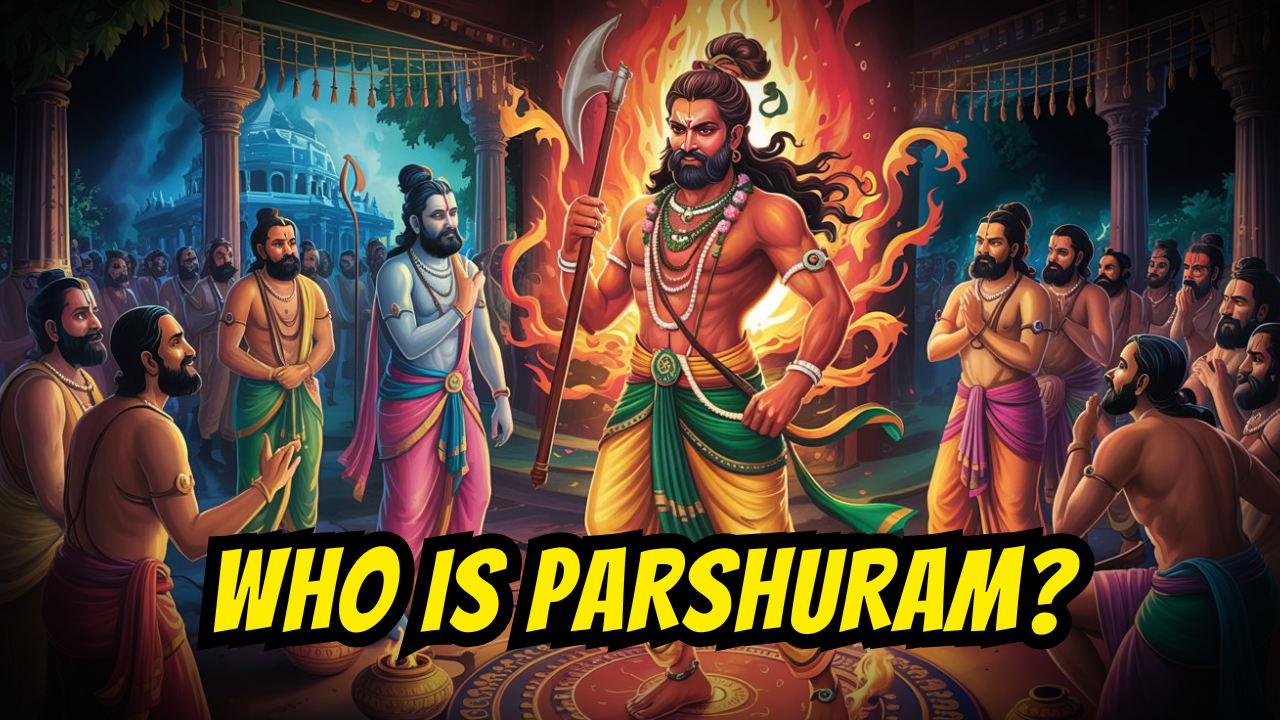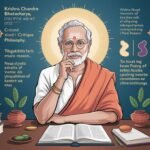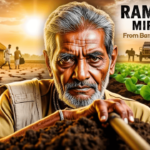Now Reading: Parshuram Jayanti – Who is Parshuram?
-
01
Parshuram Jayanti – Who is Parshuram?
Parshuram Jayanti – Who is Parshuram?

Today 29 April, 2025 is Parshuram Jayanti. Jayanti means to celebrate the birthday of individuals who are not physically present here among us.
Let’s understand who is Parshuram from Tulsidas’s Ramcharitmanas.
Tulsidas did a huge favor to Indian culture by writing the Ramcharitmanas. Every event described in it teaches important values of our culture.
Tulsidas made sure that through each story, people understand the morals and ideals of life.
This book has taken India to great moral heights.
Anyone who reads it will naturally build strong good habits and will not easily fall into bad ways.
Story of Ram’s Marriage and the Breaking of Shiva’s Bow
When Lord Ram was about to get married, he broke the great bow of Lord Shiva during a competition.
Hearing the sound of the bow breaking, a sage named Parshuram entered.
Who is Parshuram?
- Parshuram was born in the family of the great sage Bhrigu.
- The Bhrigu family had a fiery (very angry and powerful) nature, just like fire itself.
- There’s a famous story: Once, Bhrigu Rishi kicked Lord Vishnu on the chest while Vishnu was resting.
Instead of getting angry, Vishnu gently held Bhrigu’s feet and asked if his hard ribs hurt Bhrigu’s soft feet.
This made Bhrigu calm down and he blessed Vishnu saying, “You and all your forms (avatars) will be worshipped everywhere.”
Because of this fiery nature, Parshuram was also very short-tempered and powerful like fire.
Parshuram’s Angry Entry
As soon as he heard the sound of the bow breaking, Parshuram rushed to the scene like a burning flame.
He came angrily in front of King Janak (Sita’s father) and shouted:
- “Hey King! Who dared to break the bow of my Guru (Lord Shiva)? Tell me! Bring him in front of me!”
Seeing Parshuram’s anger, all the kings sitting there became scared and ran away.
Only Ram, Lakshman, and Sage Vishwamitra stayed back.
Parshuram’s Threat
Parshuram, furious, said:
- “If you don’t bring the one who broke the bow to me, I’ll kill everyone here!”
Ram humbly folded his hands and said:
- “O great one! Only someone blessed by Brahmins (like you) could have the strength to even lift Shiva’s bow. It must be some servant of Brahmins who did it.”
Hearing this, Parshuram’s anger grew even more.
Lakshman’s Boldness
Lakshman, known for his courage, could not stay silent.
He teased Parshuram:
- “You think we are like touch-me-not plants? If you even slightly touch them, they shrink.
We are not like that!
We are warriors from the Raghu family, who don’t even fear death!”
Parshuram got even more furious.
He raised his axe and warned:
- “I have destroyed arrogant warriors 21 times before. I will destroy you too if needed!”
Lakshman Challenges Parshuram
Lakshman calmly replied:
- “You keep saying you killed all warriors, but look carefully:
Your own mother was from our Kshatriya clan (warrior family). Your grandmother was from the royal family too. You didn’t kill your own family, right? - You only killed 21 kings who were being unfair to their people, not every single warrior.
- So don’t threaten us saying you destroyed Kshatriyas.”
Parshuram’s Extreme Rage
Hearing Lakshman’s fearless words, Parshuram got extremely angry.
He said:
- “If I don’t chop your head off today, I will stop calling myself Parshuram!”
Seeing the situation, Ram politely came forward with folded hands.
Ram’s Wise Words
Ram said respectfully:
- “If you had come here as a peaceful sage (Muni),
then my brother Lakshman would have touched your feet and taken your blessings.” - “But you have come here ready for a fight, with weapons.
So now we have to respond to you like warriors.”
Ram very cleverly handled the situation, calming the angry Parshuram with his wise words.
Conclusion
Tulsidas shows here that:
- Even in moments of extreme anger and threat, Ram stayed calm and respectful.
- Through intelligence, humility, and strength, he maintained peace.
- This story teaches us how to balance power with patience and wisdom.
Now, one question arises here is,How can a sage be so angry? Aren’t sages supposed to be peaceful?
To understand this, we need to know about the five elements that make up everything in the universe: Earth, Water, Fire, Air, and Space. In the ancient Indian texts, these are called the Pancha Mahabhutas.
Sages often meditate focusing on one of these elements. The element they focus on influences their nature:
- Fire: Brings passion, energy, and sometimes anger.
- Water: Brings calmness and adaptability.
- Air: Brings freedom and lightness.
- Earth: Brings stability and patience.
- Space: Brings openness and vastness.
Parshuram meditated deeply on Fire.
This made him fiery in nature—full of energy and quick to anger. But his anger wasn’t uncontrolled; it was directed towards injustice and evil.
So, even though he was a sage, his fiery nature was a result of his deep connection with the element of Fire. His anger was a tool to fight wrongdoings, not a flaw.
📚 A Lesson from the Elements
This story teaches us that sages can have different natures based on their spiritual focus. Their emotions, like anger or calmness, are not weaknesses but reflections of their inner strength and purpose.
Just like Parshuram, who used his fiery nature to uphold righteousness, each of us can channel our emotions positively.
Now, Happy Parshuram Jayanti, my friends.





























